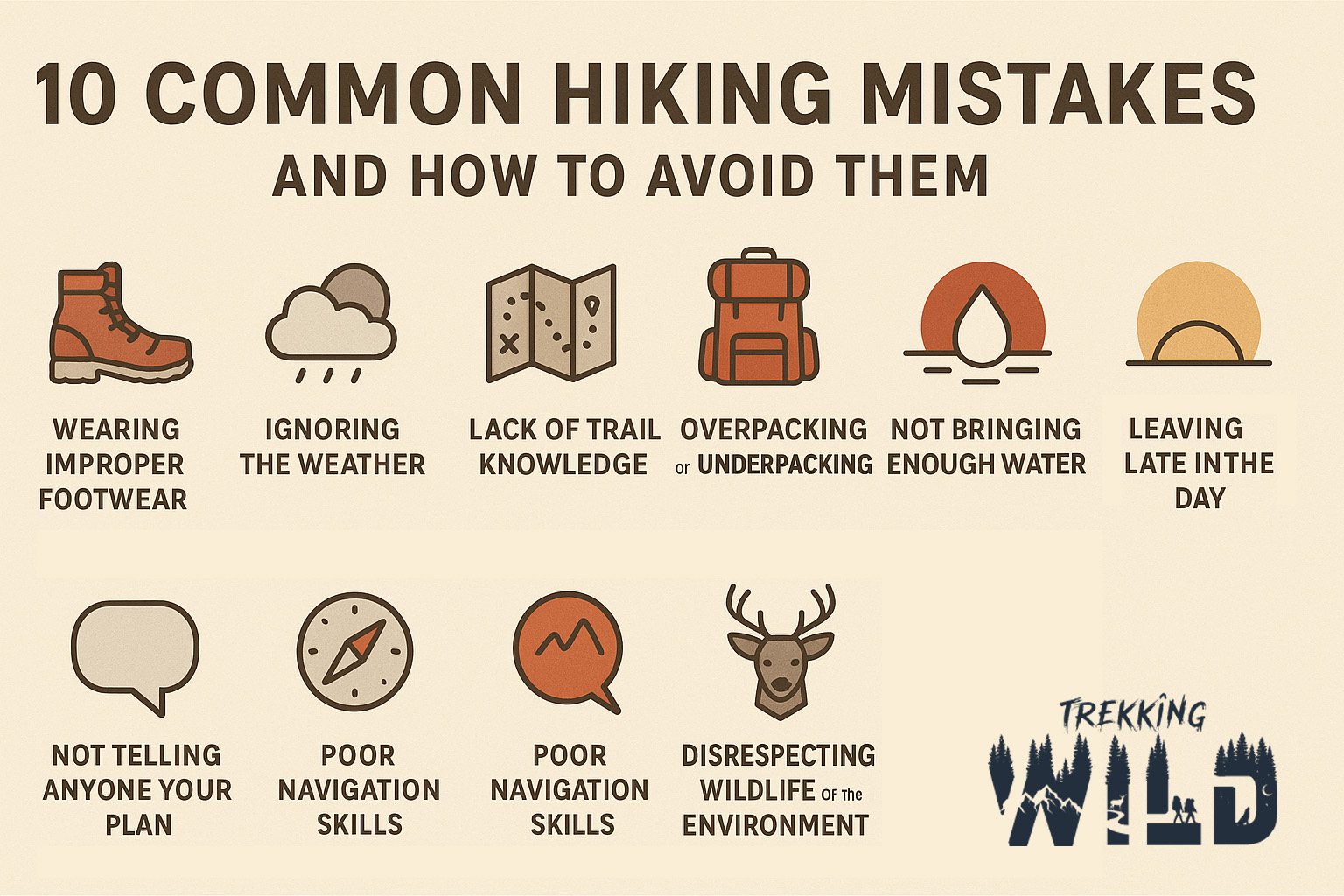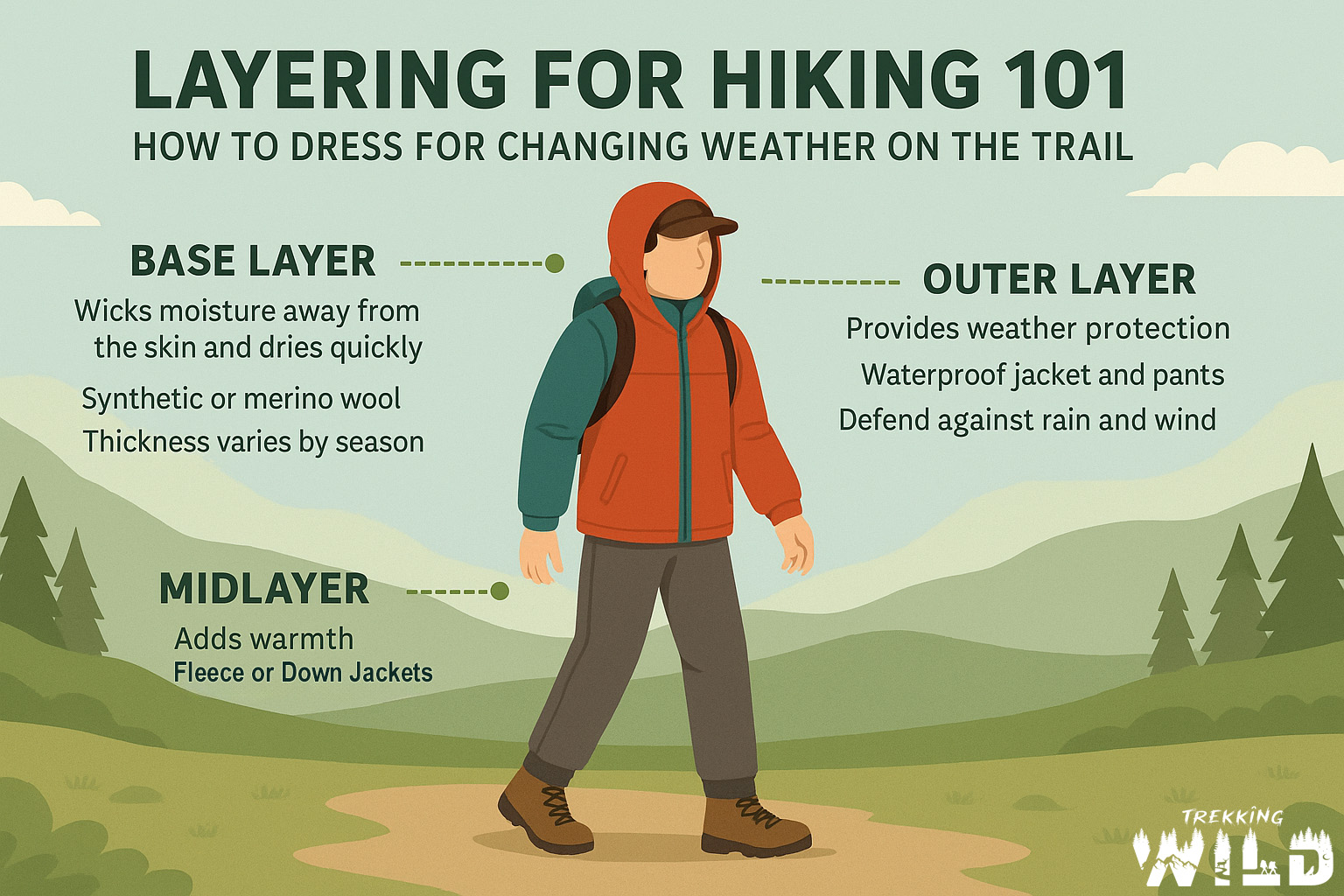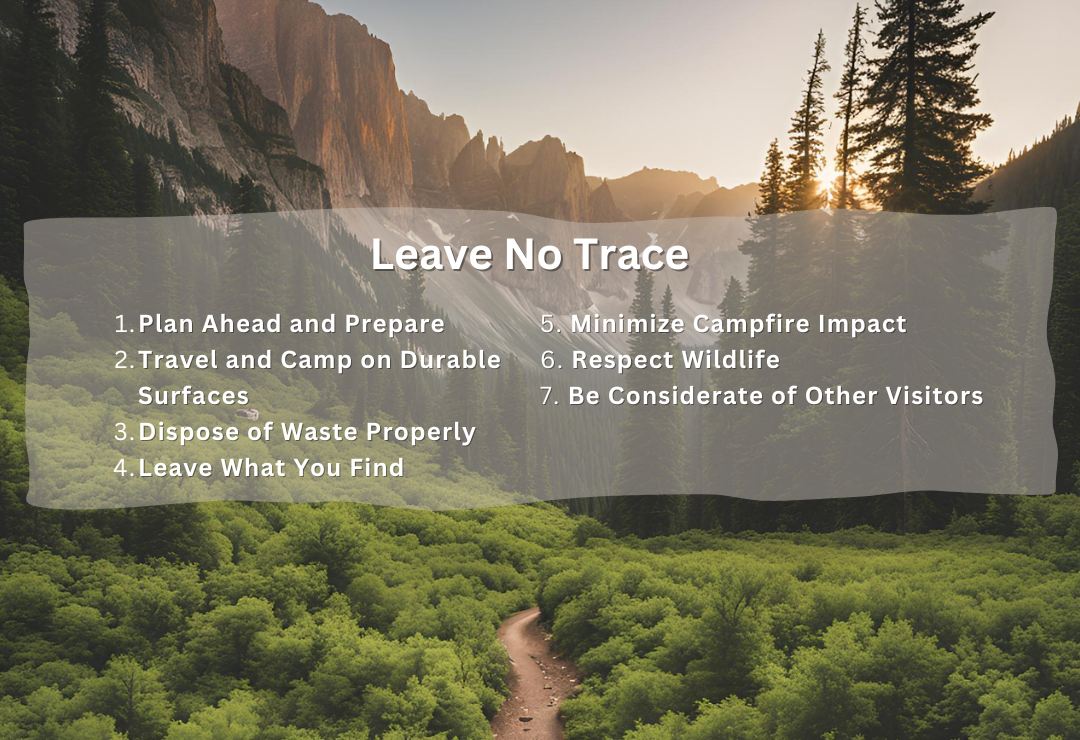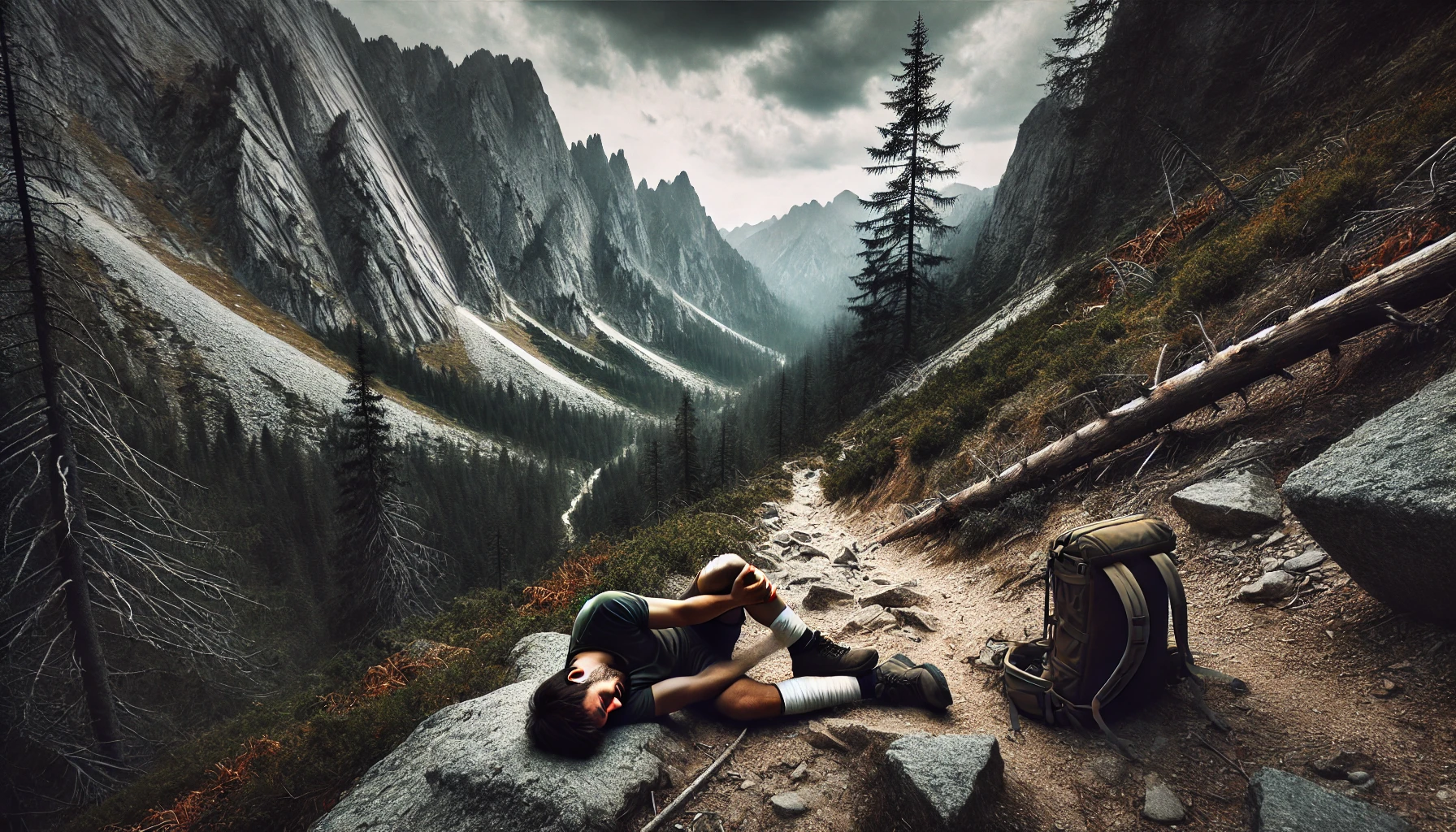
10 Common Hiking Mistakes and How to Avoid Them
Even seasoned hikers make mistakes from time to time—but when you’re out on the trail, the smallest misstep can lead to a rough day or worse. Whether you’re brand new to hiking or just need a refresher, here are 10 of the most common hiking mistakes—and how you can avoid them.
1. Not Checking the Weather
Ignoring the forecast is a common mistake. Weather can change quickly while you’re out on the trail—especially in the mountains or open areas with little shelter.
Avoid it:
Always check the forecast before heading out, and bring layers so you’re prepared for sudden shifts in temperature, rain, or wind—even if it looks clear when you leave.
2. Wearing the Wrong Footwear
Blisters, rolled ankles, and soggy socks often come down to poor shoe choices.
Avoid it:
Wear well-broken-in footwear appropriate for the terrain. Our preference for most hiking situations is trail runners over hiking boots—they’re lighter, more breathable, and dry faster. And don’t forget moisture-wicking socks! We prefer hiking in socks made from a merino wool blend. Avoid hiking in cotton socks, which tend to trap moisture and cause blisters.
3. Underestimating the Trail
Many hikers hit the trail without truly understanding what they’re in for—distance, elevation, and conditions.
Avoid it:
Research the trail in advance. Look at elevation gain, trail conditions, and user reviews. Apps like AllTrails or Gaia GPS are your friends. Be realistic about your fitness level—don’t take on trails you’re not in good enough shape to complete. It’s better to start small and build up than to risk injury or exhaustion.
4. Carrying Too Much or Too Little
Overpacking can wear you down. Underpacking can leave you in a bind.
Avoid it:
Use a checklist. For day hikes, stick to the 10 essentials and adjust based on the hike’s length and location. For backpacking, be aware of your pack weight—don’t guess, weigh it. It’s easy to bring things you don’t really need, but every extra pound adds up. Overpacking leads to a heavier pack, which will wear on your body as you put in miles or tackle steep terrain.
5. Not Bringing Enough Water
Dehydration creeps up fast, especially in dry or high-altitude environments.
Avoid it:
In high-altitude or dry climates, bring more water than you think you’ll need. Carry a lightweight filter or purification tabs—even on day hikes. I’ve made the mistake of not bringing a filter while hiking in an area with plenty of water sources, but no way to purify it. After that experience, I told myself I’d never hike without a filter again. I don’t care how short the hike is—it’s not worth the risk.
6. Skipping Snacks or Eating the Wrong Ones
Low energy = low morale (and slower pace).
Avoid it:
Pack trail snacks high in protein, carbs, and fats—think jerky, nuts, energy bars, or dried fruit. Snack regularly instead of waiting until you’re starving. Staying fueled will keep your energy up and your legs moving.
7. Leaving Late in the Day
A late start can lead to being caught on the trail after dark, unprepared.
Avoid it:
Start early to beat the heat, the crowds, and give yourself margin for unexpected delays. If you do get a late start, make sure you have enough time to finish your hike before it gets dark. And regardless of when you hit the trail, always carry a headlamp. You never know when something might go wrong or a hike might take longer than expected. Getting caught in the dark without a light source is not only stressful—it’s dangerous. A headlamp is part of the 10 essentials for a reason.
8. Not Telling Anyone Your Plan
If something goes wrong and no one knows where you are, rescue is a long shot.
Avoid it:
Always let someone know where you’re going and when you plan to be back. It could be as simple as a quick text with your trailhead, route, and ETA.
Pro tip: If you have a satellite communicator like the Garmin inReach, you can share your track with loved ones. It provides them with a link to follow your progress in real time as you hike. The inReach pings satellites at an interval of your choosing, giving a location breadcrumb trail. I always do this on backpacking trips so my family knows exactly where I am—no matter how deep I go into the backcountry or how long I’m off the grid.
9. Poor Navigation Skills
Phones die. Trail signs can be missing. Panic sets in fast when you’re lost.
Avoid it:
Always have two forms of navigation. Don’t just rely on your phone. If you prefer to go fully electronic, carry both your phone and a dedicated GPS device like a Garmin inReach. That way, if one fails, you’ve got a backup. It’s never a bad idea to also carry a good old-fashioned map and compass—just make sure you know how to use them.
Pro tip: Get comfortable with the trail before you go. Use a program like Google Earth or AllTrails’ trail preview to view the satellite map and walk through the route virtually. Take note of key landmarks and their direction from the trail. That way, if you do get off-track, you’ll already have visual reference points in mind to help you reorient and find your way back.
10. Disrespecting Wildlife or the Environment
Feeding animals, going off-trail, or leaving trash behind puts the wilderness at risk—for both nature and future hikers.
Avoid it:
Follow Leave No Trace principles. Pack it in, pack it out, and treat wildlife with respect. Always give animals the space they need. For predators like bears, mountain lions, and coyotes, maintain at least 100 yards of distance. For non-predators like deer, elk, or moose, give at least 25 yards. And remember—non-predators can still be dangerous, especially during the rut or calving season. Elk and moose have been known to trample or gore people who got too close. Give all wildlife the respect they deserve, and admire them from a safe distance.
Final Thoughts
Hiking is meant to be an adventure, not a misadventure. By avoiding these common mistakes, you’ll not only have a safer and more enjoyable time on the trail—you’ll also help protect the wild places we all love to explore. Plan smart, hike responsibly, and enjoy every step of the journey.
Matt Vittal
Matt is a software engineer living in Northwest Montana. He is an avid outdoorsman who spends his free time hiking, backpacking, camping, hunting, and fishing.



